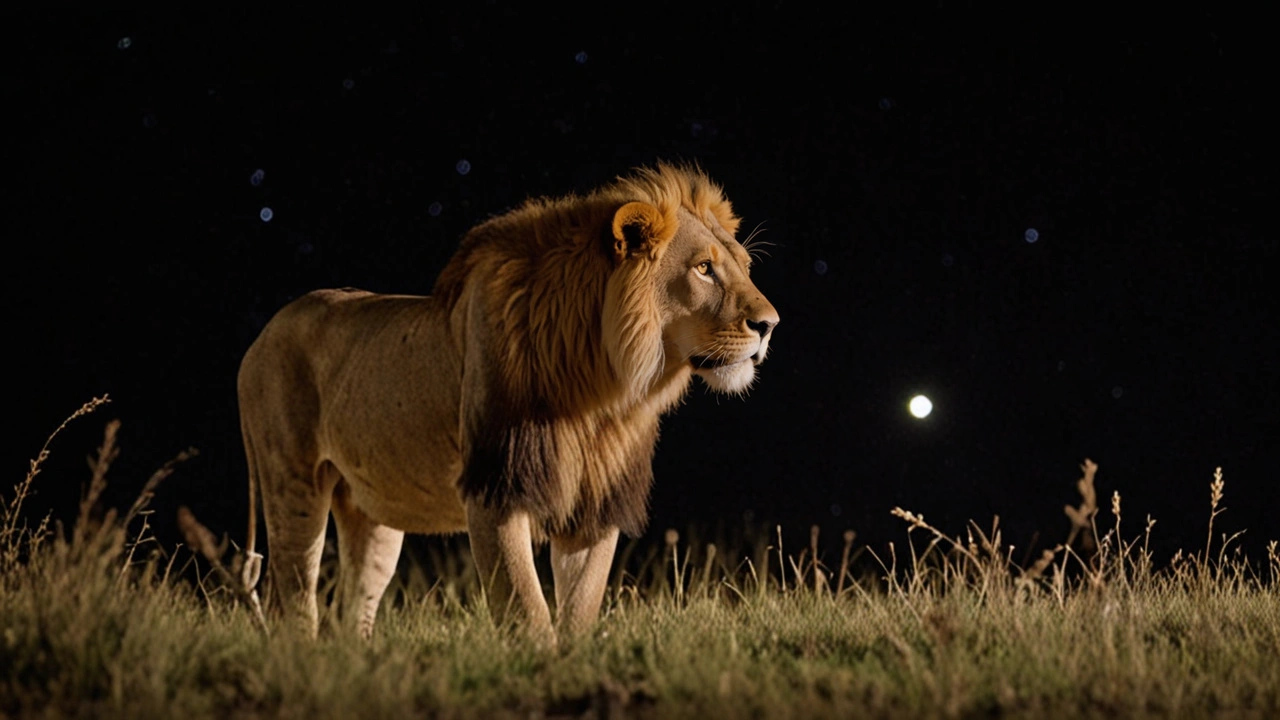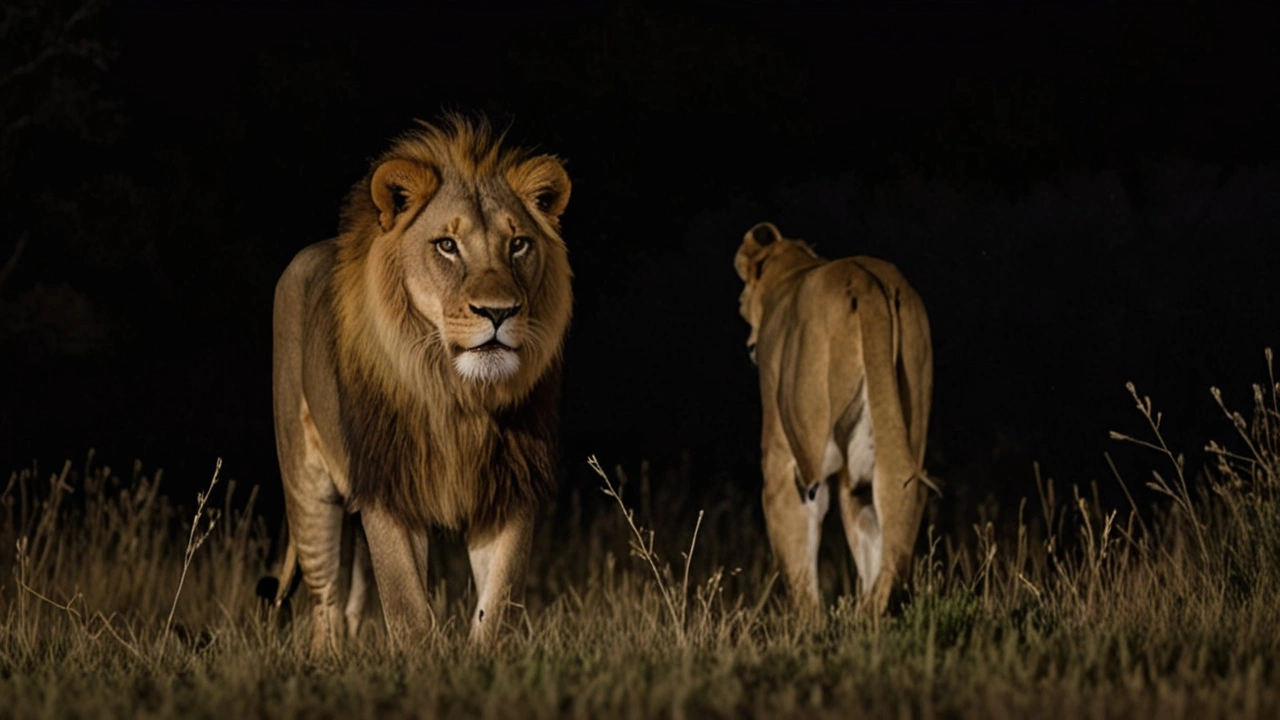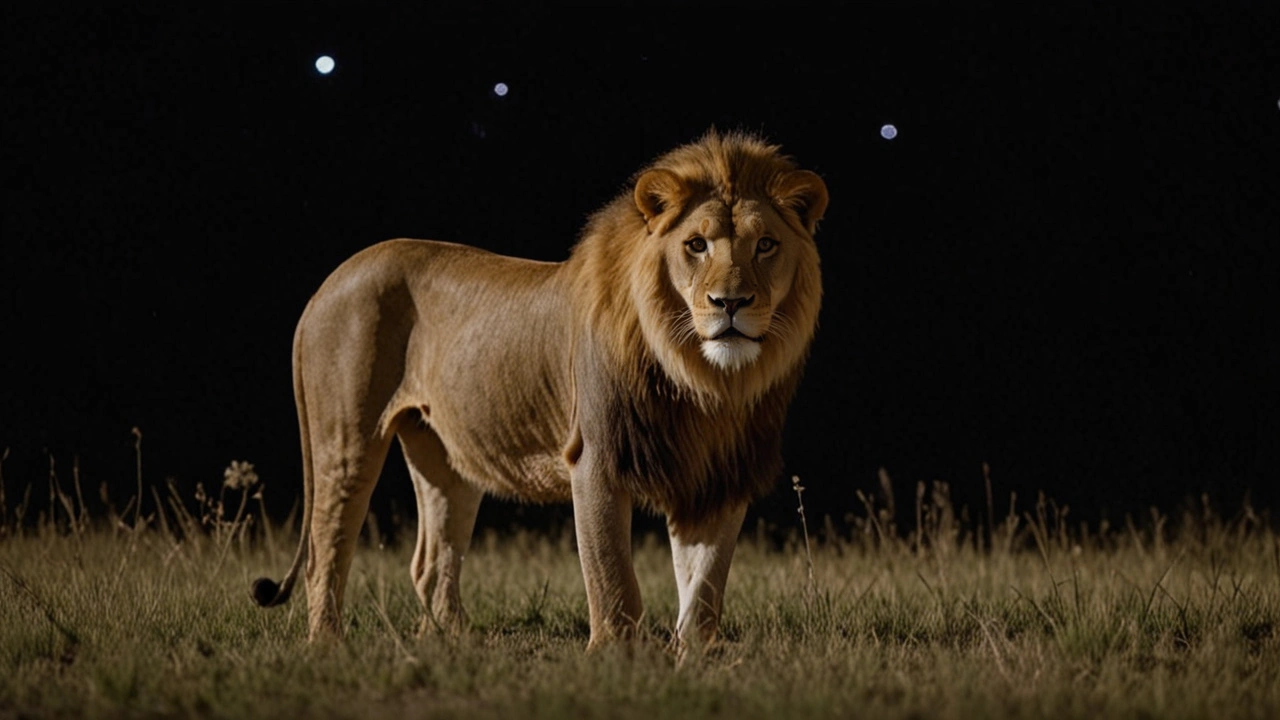Record-Breaking Swim by Lion Highlights Survival in Predator-Rich African River
In a remarkable display of bravery and resilience, two lion brothers have made headlines by completing a record-breaking swim across a predator-infested river in Uganda, as documented by a recent study co-led by Griffith University and Northern Arizona University. This impressive feat has garnered widespread attention, illustrating not only the physical prowess of these majestic creatures but also their desperate struggle to survive and thrive under harsh conditions.
The study, published in the journal Ecology and Evolution, employed state-of-the-art high-definition heat detection cameras mounted on drones to meticulously track the lions' journey. The footage captured the brothers as they navigated the perilous waters, teeming with hippos and crocodiles, two of the most dangerous animals in the African riverine ecosystem. The swim, a determined and calculated risk, underscores the lengths to which these predators will go in search of safety, sustenance, and reproductive opportunities.
Among the two, one lion, a 10-year-old named Jacob, has proven to be an epitome of resilience and fortitude. Jacob's storied past, marked by a series of life-threatening incidents, makes his participation in this hazardous endeavor all the more extraordinary. He has survived being gored by a buffalo, witnessed the poisoning of his family, and endured the loss of a leg to a poaching trap. Yet, despite these traumatic experiences, Jacob continues to defy the odds, pushing forward in his quest for survival.
This unprecedented swim took place in the Murchison Falls National Park, a sanctuary known for its diverse wildlife and picturesque landscapes. The park, however, is not free from the bleak realities of human-wildlife conflict and the ever-present threat of poaching. The lions' perilous crossing of the river, fraught with danger, is believed to be motivated by the pressing need to secure mates, as competition for lionesses within the park is fierce. With skewed sex ratios favoring male lions, finding females has become an increasingly challenging endeavor.
Dr. Alexander Braczkowski, one of the lead researchers, emphasized the significance of this behavioral observation. He pointed out that the swim is a vivid symptom of the pressures lions face, resulting directly from unbalanced sex ratios within the population. By documenting and analyzing such behaviors, scientists hope to gain deeper insights into the adaptive strategies of lions and the broader implications for their conservation.
The Challenging Terrain
Jacob and his brother's river crossing is far from a simple swim. The African rivers, especially the ones in Uganda, are notorious for their dense population of hippos and crocodiles. Hippos, often underestimated due to their herbivorous diet, are among the most aggressive animals in Africa, and crocodiles are apex predators with a reputation for ambushing their prey. The brothers' decision to brave these waters highlights their desperation and the intense struggle for survival within their ecosystem.
The use of drones equipped with heat detection technology has revolutionized wildlife studies, allowing researchers to observe animals in their natural habitats without causing any disturbance. This method proved invaluable in capturing the harrowing ordeal of the lion brothers, providing rare and intimate glimpses into their lives.

Survival Against All Odds
Jacob's journey is nothing short of inspirational. His survival through a series of severe trials paints a vivid picture of the daily battles that lions face. Being gored by a buffalo is a critical injury that can often result in death, but Jacob's resilience saw him through this life-threatening situation. The poisoning of his family is a stark reminder of the constant dangers posed by human encroachment and conflict. Yet, Jacob's resolve did not waver even after losing a leg to a poacher’s trap, a testament to his indomitable spirit.
These acts of survival are not merely tales of individual heroism but reflect broader conservation challenges. The story of Jacob and his brother points to the critical need for intensified efforts in wildlife protection and habitat preservation. Each incident in Jacob's life, from the attacks to the swim, provides important data for conservationists striving to create safer environments for endangered species.
Competition and Conservation
The fierce competition for lionesses is a direct consequence of the skewed sex ratios within Murchison Falls National Park. This imbalance leads to increased aggression among male lions and drives them to take extraordinary risks, such as swimming across predator-laden rivers. Such behavior underscores the urgent need for targeted conservation strategies to address these imbalances and ensure the sustainability of lion populations.
The insights gained from this study are crucial for developing effective conservation policies. By understanding the factors driving such risky behaviors, conservationists can devise better strategies to mitigate conflict, protect wildlife, and maintain ecological balance. The use of advanced technology, like heat detection drones, opens up new avenues for monitoring and protecting endangered species.

Future Implications
The documented swim of the lion brothers not only sets a record but also serves as a powerful reminder of the resilience of wildlife in the face of adversity. As human activities continue to encroach upon natural habitats, stories like Jacob's highlight the ever-increasing challenges faced by wildlife. They underscore the importance of concerted global efforts in wildlife conservation and the need for sustainable practices to ensure that future generations can witness the majesty of these incredible creatures.
The study led by Griffith University and Northern Arizona University represents a significant step forward in understanding lion behavior and the impact of human pressures on wildlife. It calls for greater awareness, empathy, and action to protect these magnificent animals and their habitats. The researchers' findings will hopefully inspire more comprehensive and effective conservation measures, ensuring a safer and more balanced ecosystem for lions and other threatened species.






6 Comments
Pratiksha Das
July 11, 2024 AT 18:20 PMwow so jacob lost a leg but still swam across a river full of crocs??? like bruh. i cant even swim in my bathtub without slipping. this lion got more grit than my ex after 3 coffees. 🐾🔥
ajay vishwakarma
July 13, 2024 AT 07:25 AMThis is a profoundly significant observation in behavioral ecology. The documented migration of juvenile male lions across anthropogenically altered habitats demonstrates adaptive plasticity under extreme resource competition. The use of thermal drone telemetry provides non-invasive, high-resolution data critical for conservation modeling. Jacob’s survival trajectory-gore, poisoning, amputation-exemplifies resilience metrics that should inform corridor design and anti-poaching protocols in protected areas.
devika daftardar
July 14, 2024 AT 20:14 PMsometimes i think about how animals just keep going even when the world breaks them over and over again like a broken record and still they rise like the sun even with one leg and no family and i wonder if we humans are the ones who lost something bigger than just a limb
fatima almarri
July 14, 2024 AT 21:21 PMThe intersection of anthropogenic pressure and intraspecific competition here is a textbook case of ecological cascade. Jacob’s behavior isn't just survival-it's a biomarker of habitat fragmentation. The skewed sex ratio, coupled with poaching-induced demographic collapse, forces males into high-risk dispersal corridors. We need to scale up community-based conservation models that incentivize coexistence, not just enforcement. This isn't about lions-it's about our moral infrastructure.
deepika singh
July 16, 2024 AT 01:49 AMJACOB IS A LIVING LEGEND. 🦁💖 One leg? Poisoned family? Gored by a buffalo? And he still outswam crocs like it was a Sunday dip? That’s not just courage-that’s pure, unfiltered, wild soul. We owe him more than just a study. We owe him a world where he doesn’t have to risk everything just to find love. Let’s make it happen.
amar nath
July 17, 2024 AT 00:25 AMyo this lion bros swim reminds me of when my uncle in rural UP crossed the river on a bicycle with a goat on his back during monsoon. no drones no cameras just grit and chai. animals and humans both do crazy stuff when they gotta. jacob’s story? it’s the same as my grandma’s-survive, adapt, keep movin. respect.